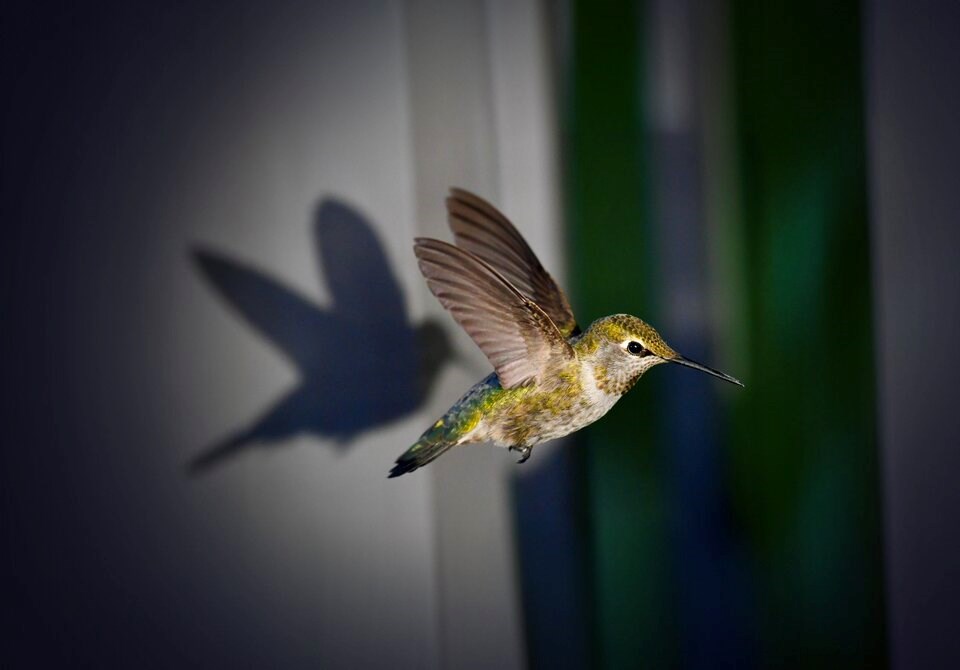The wings and beak of a hummingbird are vastly more sensitive than many other birds, traits that likely allow them to absorb a gust of wind and maintain a hover in front of a flower, a new study has found.
The research into the nectarivore bird, published in the journal Current Biology Wednesday, offers a neural map showing how a tiny brain responds to touch, and could aid scientists as they seek to understand and treat humans with debilitating neurodegenerative diseases and strokes.
“Getting at the limitations of nerve conduction and the way that brain cells can actually wire together… was the intriguing feature of hummingbirds,” said supervising author Duncan Leitch.
“Hummingbirds definitely are pushing the lower limits of what flying little vertebrate animals could be.”
Leitch — an affiliate faculty member at the University of British Columbia (UBC) and an assistant professor at the University of California Los Angeles — said he’s always been fascinated by the natural world, an interest that pushed him to do a PhD on alligators' sense of touch.
A turn to birds opens up a whole new sensory world. The most diverse group of land animals with a backbone, there are more than 10,000 existing bird species alive today. To understand how Anna’s hummingbirds react relative to those other birds, Leitch and his colleagues compared it with the zebra finch — a small, orange-billed songbird that lives in large flocks across Australia and Indonesia, and according to Leitch, is often considered the “lab rat of birds.”
Inside his lab in Vancouver, Leitch and his team anesthetized individuals from both bird species and placed electrodes directly on the surface of their brains. Leitch said they then exposed the birds to several stimuli — from flashes of light and the ringing of bells, to the brush of a Q-tip and the light puff of an air compressor.
Every time the birds felt something, electrical activity from firing neurons was beamed onto a computer screen in the form of wiggly lines. Amplified thousands of times over a loudspeaker, the signal also came in as a cacophony of clicks and tapping sounds, each one representing a firing neuron.
“I can actually see and hear responses from the cells themselves,” said Leitch.
Through thousands of tests, a map of how the birds’ brains respond to touch began to emerge.
“In our brain, we have a continuous map of our body that goes from the tips of our toes, spreading up to our legs, across our torso and into our lips and face, the top of the head and into our fingertips,” said Leitch.
Birds, on the other hand, have that map broken in two, with one part of the brain lighting up when something touches their wings, breast, and torso, and another part reacting when the feet and the tail feathers are stimulated.
The leading wing edge of the Anna’s hummingbird was found to be so sensitive that it responded to a plastic filament tool not even a human fingertip would feel, the study found. The bird’s beak also appeared to react to the slightest of stimuli, an adaptation Leitch suspects helps hummingbirds manipulate different flowers to reach their nectar.
“You can imagine, that if they were able to react to very fine gusts, that they will be able to centre themselves and keep themselves oriented in space correctly,” he said.
UBC research provides a 'sense of empathy' for hummingbirds
Pei-Hsuan Wu, a PhD student in UBC's zoology department and a co-author on the study, said their research represents the first time anyone has tried to measure how Anna’s hummingbirds respond to touch. Their data, she said, shows the birds can detect even a tiny bit of force, especially in the sensitive areas of the wing tips and bill.
“Anything above that could be painful,” said Wu.
Outside scientific circles, Leitch said he hopes what his team uncovered offers a greater appreciation for how birds feel, especially when it comes to animal welfare.
“We domesticate them and we use them for many kinds of human purposes. But hopefully there will be some way of thinking about what the birds themselves are experiencing and providing a better quality of life for them,” he said.
At a personal level, Leitch said spending that many hours watching and listening to the sensory reactions of unconscious hummingbirds inevitably forced him to consider what it would be like to put oneself in their feathers, so to speak.
All animals react to the same natural forces around them, he said. But the range of what can be heard, seen and felt — the sensory world — would almost certainly be fantastically different.
“You imagine how life would be through a high-speed camera, moving through the world the fastest way possible. How vision might just seem like a blur of things around you and how you might actually be feeling things,” Leitch said.
“You definitely get a sense of empathy for these animals.”



